Search the Collection
The search page allows you to search within the collection by one or more of several criteria.
(at upper left) — This blank allows for a search across all fields (Collecting Area, Catalog, etc.). This includes any keywords associated with that item (keywords aren’t visible in the table). Partial strings may be used (ex. “car” will return not only stamps with cars or train cars on them, but also every postcard in the collection).
Typically, the country or area of issue. The options in this dropdown box are pulled from the database, so if a country or area is not listed, there are not yet any entries in the collection from that country/area.
This option will search the collection for a specific number or character in any of the catalogs used (Michel, Scott, Borek, etc.). This can be very broad — for example, a search for “15” will return not just those entries cataloged as Michel 15, but also 152, 715, P15, etc. It would also return entries where the Michel number doesn’t contain a “15”, but some other catalog number does.
This shows a thumbnail of the item. Clicking on the thumbnail will open a larger image. If the thumbnail shows a gray box, that indicates that that item is not yet in the collection. Clicking on the thumbnail shows a larger scan.
This is typically the year of issue of a stamp. In the case of used stamps, the year is typically still the issue date, not the year of actual use. An exception to this general rule is made for the occasional cover for which the unique usage is the reason for including it in the collection. The options in this dropdown box are pulled from the database, so if a year is not listed, there are not yet any entries in the collection from that year.
This is the general color family (ex. blue, green, etc.) of a stamp. Note that the mere presence of two colors on a stamps doesn’t warrant a “Multi” classification. The dominant color is used unless there is no dominant color, in which case “Multi” is used.
This is the face value of the stamp. For surcharged overprints, the value is given as new-on-old (ex. 2 P on 3 Pf). For covers with multiple stamps used, the total face value is typically used.
| Collecting Area | Catalog Numbers | Year | Color | Face Value | keyword | Friedemann | ArGe Kolonien | |||||||||||||||||
|---|---|---|---|---|---|---|---|---|---|---|---|---|---|---|---|---|---|---|---|---|---|---|---|---|
| sortorder | Collecting Area | Catalog Numbers | Image | Year | Color | Face Value | keyword | Michel | Scott | Erler | Einfeldt | Borek | Frech | Strahlendorff/Mette | Sieger | Frost | Haberer | Graue | Krieg | Other Catalog | Friedemann | ArGe Kolonien | Link | Details |
| 1 | Germany (Imperial) - Postage | 1, 1 | 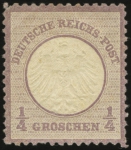 |
1872 | Purple | 1/4 Gr | imperial small eagle shield kaiserlicher kleiner Adler schild | 1 | 1 | Link | More details | |||||||||||||
| 2 | Germany (Imperial) - Postage | 2 a, 2 | 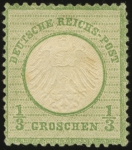 |
1872 | Green | 1/3 Gr | imperial small eagle shield kaiserlicher kleiner Adler schild | 2 a | 2 | Link | More details | |||||||||||||
| 3 | Germany (Imperial) - Postage | 2 b, 2b | 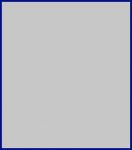 |
1872 | Green | 1/3 Gr | imperial small eagle shield kaiserlicher kleiner Adler schild | 2 b | 2b | Link | More details | |||||||||||||
| 4 | Germany (Imperial) - Postage | 3, 3 | 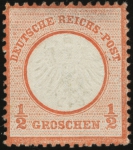 |
1872 | Orange | 1/2 Gr | imperial small eagle shield kaiserlicher kleiner Adler schild | 3 | 3 | Link | More details | |||||||||||||
| 5 | Germany (Imperial) - Postage | 4, 4 | 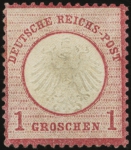 |
1872 | Red | 1 Gr | imperial small eagle shield kaiserlicher kleiner Adler schild | 4 | 4 | Link | More details | |||||||||||||
| 6 | Germany (Imperial) - Postage | 5, 5 | 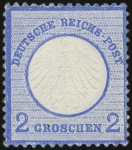 |
1872 | Blue | 2 Gr | imperial small eagle shield kaiserlicher kleiner Adler schild | 5 | 5 | Link | More details | |||||||||||||
| 7 | Germany (Imperial) - Postage | 6, 6 | 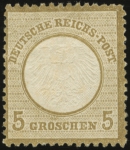 |
1872 | Brown | 5 Gr | imperial small eagle shield kaiserlicher kleiner Adler schild | 6 | 6 | Link | More details | |||||||||||||
| 8 | Germany (Imperial) - Postage | 7, 7 | 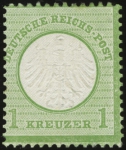 |
1872 | Green | 1 Krz | imperial small eagle shield kaiserlicher kleiner Adler schild | 7 | 7 | Link | More details | |||||||||||||
| 9 | Germany (Imperial) - Postage | 8, 8 | 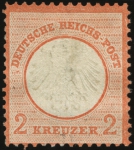 |
1872 | Orange | 2 Krz | imperial small eagle shield kaiserlicher kleiner Adler schild | 8 | 8 | Link | More details | |||||||||||||
| 10 | Germany (Imperial) - Postage | 9, 9 | 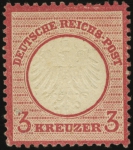 |
1872 | Red | 3 Krz | imperial small eagle shield kaiserlicher kleiner Adler schild | 9 | 9 | Link | More details | |||||||||||||
| 11 | Germany (Imperial) - Postage | 10, 10 | 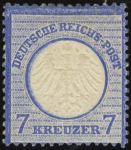 |
1872 | Blue | 7 Krz | imperial small eagle shield kaiserlicher kleiner Adler schild | 10 | 10 | Link | More details | |||||||||||||
| 12 | Germany (Imperial) - Postage | 11, 11 | 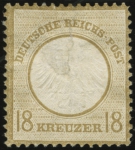 |
1872 | Brown | 18 Krz | imperial small eagle shield kaiserlicher kleiner Adler schild | 11 | 11 | Link | More details | |||||||||||||
| 13 | Germany (Imperial) - Postage | 12, 12 | 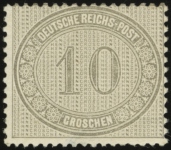 |
1872 | Gray | 10 Gr | imperial numbers numerals kaiserliche Zahlen Ziffern | 12 | 12 | Link | More details | |||||||||||||
| 14 | Germany (Imperial) - Postage | 13, 13 | 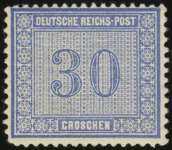 |
1872 | Blue | 30 Gr | imperial numbers numerals kaiserliche Zahlen Ziffern | 13 | 13 | Link | More details | |||||||||||||
| 15 | Germany (Imperial) - Postage | 14, 3a | 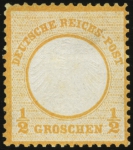 |
1872 | Orange | 1/2 Gr | imperial small eagle shield kaiserlicher kleiner Adler schild | 14 | 3a | Link | More details | |||||||||||||
| 16 | Germany (Imperial) - Postage | 15, 8a | 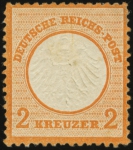 |
1872 | Orange | 2 Krz | imperial small eagle shield kaiserlicher kleiner Adler schild | 15 | 8a | Link | More details | |||||||||||||
| 17 | Germany (Imperial) - Postage | 16, 14 | 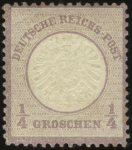 |
1872 | Purple | 1/4 Gr | imperial large eagle shield kaiserlicher großer Adler schild | 16 | 14 | Link | More details | |||||||||||||
| 18 | Germany (Imperial) - Postage | 17 a, 15 | 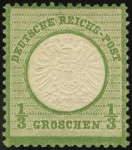 |
1872 | Green | 1/3 Gr | imperial large eagle shield kaiserlicher großer Adler schild | 17 a | 15 | Link | More details | |||||||||||||
| 19 | Germany (Imperial) - Postage | 17 b, 15a | 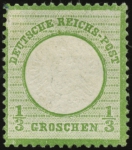 |
1872 | Green | 1/3 Gr | imperial large eagle shield kaiserlicher großer Adler schild | 17 b | 15a | Link | More details | |||||||||||||
| 20 | Germany (Imperial) - Postage | 18, 16 | 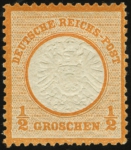 |
1872 | Orange | 1/2 Gr | imperial large eagle shield kaiserlicher großer Adler schild | 18 | 16 | Link | More details | |||||||||||||
| 21 | Germany (Imperial) - Postage | 19, 17 | 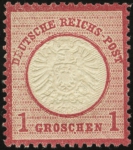 |
1872 | Red | 1 Gr | imperial large eagle shield kaiserlicher großer Adler schild | 19 | 17 | Link | More details | |||||||||||||
| 22 | Germany (Imperial) - Postage | 20, 18 | 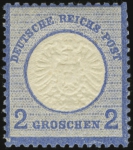 |
1872 | Blue | 2 Gr | imperial large eagle shield kaiserlicher großer Adler schild | 20 | 18 | Link | More details | |||||||||||||
| 23 | Germany (Imperial) - Postage | 21 a, 19 | 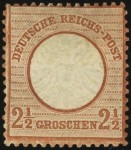 |
1872 | Brown | 2 1/2 Gr | imperial large eagle shield kaiserlicher großer Adler schild | 21 a | 19 | Link | More details | |||||||||||||
| 24 | Germany (Imperial) - Postage | 21 b, 19a | 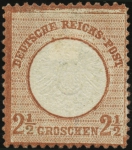 |
1872 | Brown | 2 1/2 Gr | imperial large eagle shield kaiserlicher großer Adler schild | 21 b | 19a | Link | More details | |||||||||||||
| 25 | Germany (Imperial) - Postage | 21 c | 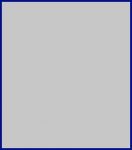 |
1872 | Brown | 2 1/2 Gr | imperial large eagle shield kaiserlicher großer Adler schild | 21 c | Link | More details | ||||||||||||||
| 26 | Germany (Imperial) - Postage | 22, 20 | 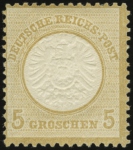 |
1872 | Brown | 5 Gr | imperial large eagle shield kaiserlicher großer Adler schild | 22 | 20 | Link | More details | |||||||||||||
| 27 | Germany (Imperial) - Postage | 23 a, 21 | 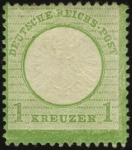 |
1872 | Green | 1 Krz | imperial large eagle shield kaiserlicher großer Adler schild | 23 a | 21 | Link | More details | |||||||||||||
| 28 | Germany (Imperial) - Postage | 23 b, 21a | 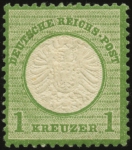 |
1872 | Green | 1 Krz | imperial large eagle shield kaiserlicher großer Adler schild | 23 b | 21a | Link | More details | |||||||||||||
| 29 | Germany (Imperial) - Postage | 24, 22 | 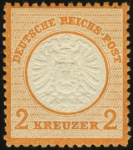 |
1872 | Orange | 2 Krz | imperial large eagle shield kaiserlicher großer Adler schild | 24 | 22 | Link | More details | |||||||||||||
| 30 | Germany (Imperial) - Postage | 25, 23 | 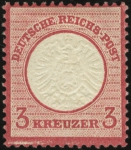 |
1872 | Red | 3 Krz | imperial large eagle shield kaiserlicher großer Adler schild | 25 | 23 | Link | More details | |||||||||||||
| 31 | Germany (Imperial) - Postage | 26, 24 | 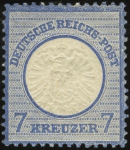 |
1872 | Blue | 7 Krz | imperial large eagle shield kaiserlicher großer Adler schild | 26 | 24 | Link | More details | |||||||||||||
| 32 | Germany (Imperial) - Postage | 27 a, 25 | 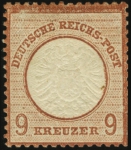 |
1872 | Brown | 9 Krz | imperial large eagle shield kaiserlicher großer Adler schild | 27 a | 25 | Link | More details | |||||||||||||
| 33 | Germany (Imperial) - Postage | 27 b, 25a | 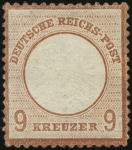 |
1872 | Brown | 9 Krz | imperial large eagle shield kaiserlicher großer Adler schild | 27 b | 25a | Link | More details | |||||||||||||
| 34 | Germany (Imperial) - Postage | 27 c | 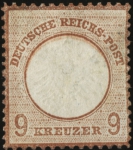 |
1872 | Brown | 9 Krz | imperial large eagle shield kaiserlicher großer Adler schild | 27 c | Link | More details | ||||||||||||||
| 35 | Germany (Imperial) - Postage | 28, 26 | 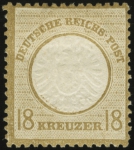 |
1872 | Brown | 18 Krz | imperial large eagle shield kaiserlicher großer Adler schild | 28 | 26 | Link | More details | |||||||||||||
| 36 | Germany (Imperial) - Postage | 29, 27 | 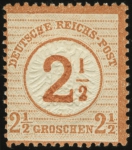 |
1874 | Brown | 2 1/2 Gr on 2 1/2 Gr | imperial small eagle shield kaiserlicher kleiner Adler schild | 29 | 27 | Link | More details | |||||||||||||
| 37 | Germany (Imperial) - Postage | 30, 28 | 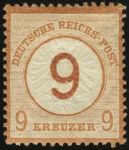 |
1874 | Brown | 9 Krz on 9 Krz | imperial small eagle shield kaiserlicher kleiner Adler schild | 30 | 28 | Link | More details | |||||||||||||
| 38 | Germany (Imperial) - Postage | 31 a, 29 | 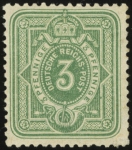 |
1875 | Green | 3 Pf | imperial eagle kaiserlicher reichsadler nummern ziffern oval | 31 a | 29 | Link | More details | |||||||||||||
| 39 | Germany (Imperial) - Postage | 31 b, 29a | 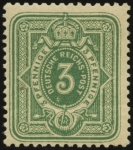 |
1875 | Green | 3 Pf | imperial eagle kaiserlicher reichsadler nummern ziffern oval | 31 b | 29a | Link | More details | |||||||||||||
| 40 | Germany (Imperial) - Postage | 32, 30 | 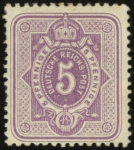 |
1875 | Purple | 5 Pf | imperial eagle kaiserlicher reichsadler nummern ziffern oval | 32 | 30 | Link | More details | |||||||||||||
| 41 | Germany (Imperial) - Postage | 33 a, 31 | 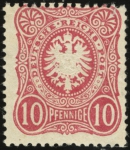 |
1875 | Red | 10 Pf | imperial eagle kaiserlicher reichsadler nummern ziffern oval | 33 a | 31 | Link | More details | |||||||||||||
| 42 | Germany (Imperial) - Postage | 33 aa, 31a | 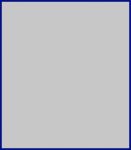 |
1875 | Red | 10 Pf | imperial eagle kaiserlicher reichsadler nummern ziffern oval | 33 aa | 31a | Link | More details | |||||||||||||
| 43 | Germany (Imperial) - Postage | 33 b | 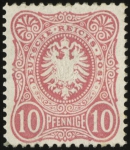 |
1879 | Red | 10 Pf | imperial eagle kaiserlicher reichsadler nummern ziffern oval | 33 b | Link | More details | ||||||||||||||
| 44 | Germany (Imperial) - Postage | 34 a, 32 | 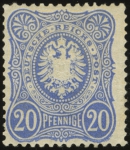 |
1875 | Blue | 20 Pf | imperial eagle kaiserlicher reichsadler nummern ziffern oval | 34 a | 32 | Link | More details | |||||||||||||
| 45 | Germany (Imperial) - Postage | 34 b, 32a | 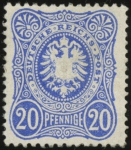 |
1878 | Blue | 20 Pf | imperial eagle kaiserlicher reichsadler nummern ziffern oval | 34 b | 32a | Link | More details | |||||||||||||
| 46 | Germany (Imperial) - Postage | 35 a, 33 | 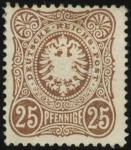 |
1875 | Brown | 25 Pf | imperial eagle kaiserlicher reichsadler nummern ziffern oval | 35 a | 33 | Link | More details | |||||||||||||
| 47 | Germany (Imperial) - Postage | 35 aa | 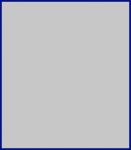 |
1877 | Brown | 25 Pf | imperial eagle kaiserlicher reichsadler nummern ziffern oval | 35 aa | Link | More details | ||||||||||||||
| 48 | Germany (Imperial) - Postage | 35 ab | 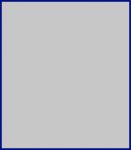 |
1875 | Brown | 25 Pf | imperial eagle kaiserlicher reichsadler nummern ziffern oval | 35 ab | Link | More details | ||||||||||||||
| 49 | Germany (Imperial) - Postage | 35 b, 33a | 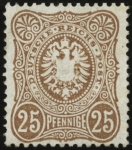 |
1878 | Brown | 25 Pf | imperial eagle kaiserlicher reichsadler nummern ziffern oval | 35 b | 33a | Link | More details | |||||||||||||
| 50 | Germany (Imperial) - Postage | 35 c, 33b | 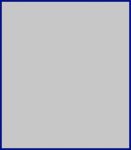 |
1879 | Brown | 25 Pf | imperial eagle kaiserlicher reichsadler nummern ziffern oval | 35 c | 33b | Link | More details |
Collecting Area:
Image:
Year:
Color:
Face Value:
Michel:
Scott:
Erler:
Einfeldt:
Borek:
Frech:
Strahlendorff/Mette:
Sieger:
Frost:
Haberer:
Graue:
Krieg:
Other Catalog:
Friedemann:
ArGe Kolonien:
Link:
